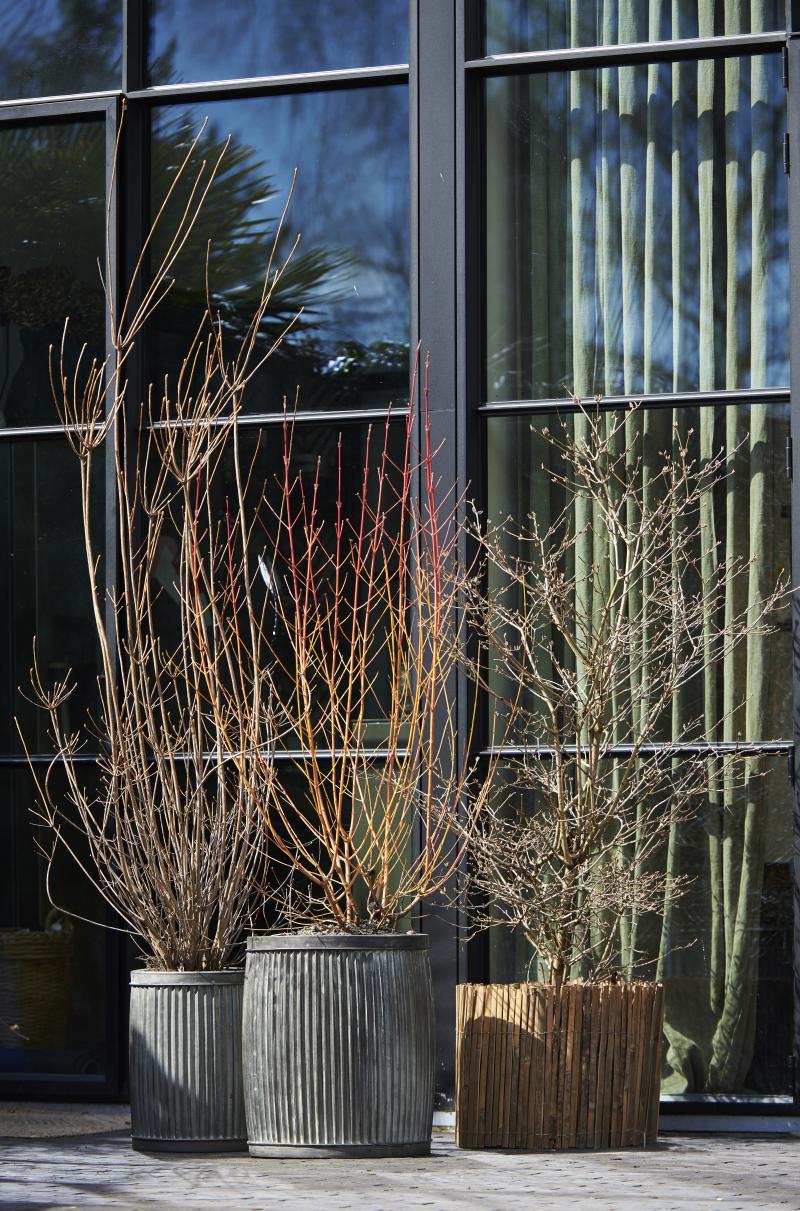Sleeping Beauties: January Garden Plants of the Month
The story behind Sleeping Beauties
When the whole garden is still sleeping, dogwood (Cornus), Viburnum and redvein enkianthus (Enkiathus) with their attractive, sometimes coloured branches and eye-catching lines still put on a good show in winter, particularly with a coating of rime or snow. And although these sleeping beauties appear to be resting, there’s lots going on inside these plants that manifests themselves faster than you think: they’re early bloomers that offer beauty during all four seasons.
Origin

Range
Viburnum
Viburnum tinus is the popular evergreen ‘snowball’ that flowers with white umbels and later produces steel-blue berries. Viburnum daviddi is also evergreen, and grows less high with slightly coarser foliage and more robust flowers. Viburnum x burkwoodii and V. bodnantense are ‘naked flowering’, producing flowers late in winter and only making leaves then.
Redvein enkianthus
This ornamental shrub is part of the heather family, which also includes Erica, Calluna and rhododendron. E. campanulatus has bell-like flowers in white, pink and red or a mixture of the three. The attractive layered growth of the straight main branches is a feast for the eye.
Dogwood
The best-known dogwood species is Cornus mas which comes into bloom early as a naked flowering plant, and only produces leaves later. Cornus alba and C. sanguinea are particularly known for their winter look with their bare coloured branches in red, yellow, orange or black.
What to look for when buying Sleeping Beauties?
• The pot size, height of the plants, plant shape and branching must be in proportion with one another.
• Sufficient buds must be visible when buying to guarantee the likelihood of flowering in late winter and spring.
• Pests and diseases play virtually no role when purchasing early; carefully check for caterpillars and aphids later in the season.
• Handy to know: most plants require a plant passport nowadays.
Care tips for customers
• Dogwood, Viburnum and redvein enkianthus all prefer a spot in full sun, although they can also tolerate partial shade.
• Plant these Sleeping Beauties deep so that they can root well, and choose a spot where they have room to grow.
• Viburnum and redvein enkianthus prefer humus-rich, acidic soil that is not too dry, whilst dogwood is not picky about where it puts its roots.
• All three appreciate some organic fertiliser once a year.
• Viburnum and redvein enkianthus do not need pruning, while dogwood can be cut back if required: the best pruning time is in March or after flowering.
Sales and display tips for Sleeping Beauties
Dogwood, Viburnum and redvein enkianthus are attractive ornamental shrubs that can trigger customers’ enthusiasm for the garden, even in winter. Display them against a calm background to show off their attractive lines of the branches, or use the available poster material as inspiration. Placing the Sleeping Beauties in decorative planters brings more life to the display, as does adding a couple of bowls with winter pansies and early spring blooming flowers for some colour as a taster of the spring to come.
Images of Sleeping Beauties
You can download and use the images below free of charge if you credit Thejoyofplants.co.uk.
Instagram: @thejoyofplants
Facebook: @thejoyofplants
Twitter: @thejoyofplants
For more information about the 2019 Garden Plants of Month selection, click here.
Sleeping Beauties poster
You can download the poster using the link below.








